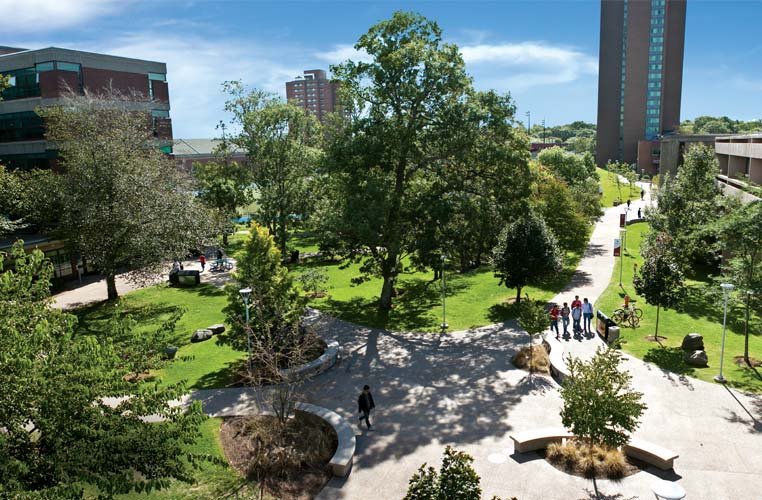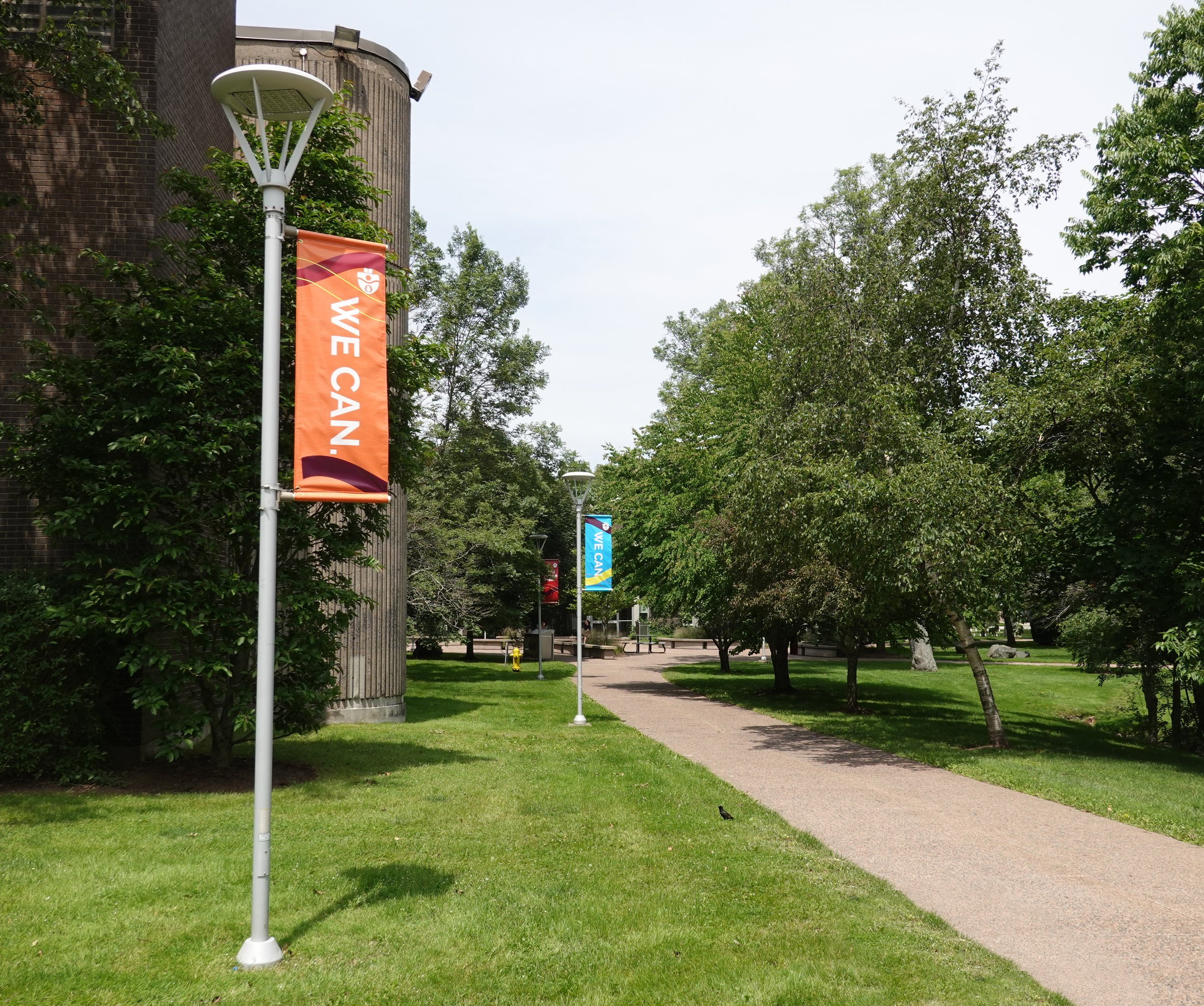The Science Building at Saint Mary’s University.
Research into sustainable agriculture and more data-efficient 3D modeling will benefit from newly announced federal funding through the Canada Foundation for Innovation’s (CFI) John R. Evans Leaders Fund (JELF).
Funding for biology researcher Dr. David Chiasson will allow him to explore sustainable agriculture practices in a project titled “Symbiotic nitrogen fixation in legume plants.”
Dr. David Chiasson
“A central goal of sustainable agricultural practice is to provide nutritious food and plant products while minimizing the impact on the environment,” says Dr. Chiasson. “Legume plants such as beans, alfalfa, and clover are a key component of sustainable agriculture since they do not require nitrogen fertilizer for growth. This unique group of plants forms a symbiotic relationship with soil bacteria called rhizobia. Rhizobia can convert nitrogen gas from the atmosphere into nitrogen fertilizer for the plant in a process termed nitrogen fixation. This association therefore reduces the need for applied nitrogen fertilizers in agriculture.”
The production of synthetic nitrogen fertilizers consumes vast quantities of fossil fuels, and their application leads to negative environmental outcomes such as greenhouse gas emissions and contaminated water resources. Coupled with the rising price of fertilizers, farmers are increasingly turning to legumes as a sustainable means of adding nitrogen to the soil.
“The long-term goal of this project is to increase the productivity of legume plants,” explains Dr. Chiasson. “This research will provide the knowledge base for strategies aimed to reduce the environmental impact of the agricultural sector while increasing the productivity of our crops. An improved understanding of the nitrogen-fixation symbiosis is both timely and essential as we move towards a future of more environmentally responsible farming practices in Canada.”
Dr. Jiju Poovvancheri, a researcher in the mathematics and computing science department, received funding for a project titled “Research Infrastructure for Large-scale 3D Geometry Acquisition and Modeling.”
“The CFI fund will be used to set up the lab and purchase research equipment including an AI server, Light Detection and Ranging (LiDAR) scanner and high-performance workstations capable of acquiring and processing large-scale three-dimensional data,” says Dr. Poovvancheri.
Dr. Jiju Poovvancheri
Current practices in city modeling include acquiring raw measurements of the physical world using LiDAR sensors and turning the sensor data into three dimensional meshes. Large-scale meshes created in this manner normally contain trillions of triangles, putting a huge burden on rendering, data transfer and storage of applications. Furthermore, most of the reconstructed meshes lack geometric details and therefore do not represent a good choice for 3D navigation, and AR/VR.
“High fidelity digital representations of cities are essential for modern-day applications such as urban planning, 3D navigation, and augmented/virtual reality (AR/VR),” explains Dr. Poovvancheri. “This project aims at bridging existing gaps in urban modeling pipeline by developing an AI (Artificial Intelligence) driven urban modeling software ecosystem consisting of algorithms, tools, and data for creating lightweight and highly detailed 3D urban models.”
The Honourable François-Philippe Champagne, Minister of Innovation, Science and Industry, announced more than $64 million to support 251 research infrastructure projects at 40 universities across Canada.
















